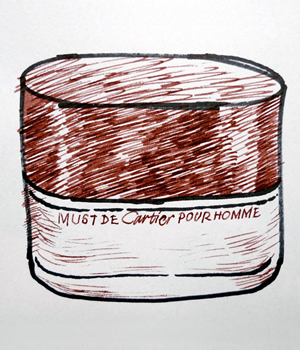Tagged With ‘mandarin’
Tom Daxon
Laconia
2 July, 2018
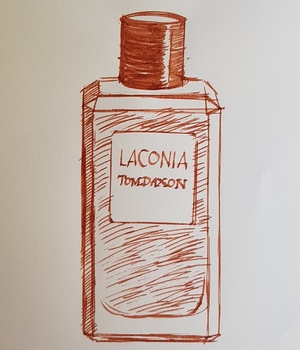 The Greek region of Laconia includes some of the most historic and spectacular parts of the Peloponnese, including the city of Sparta (the regional capital), the Mani peninsula and, on its eastern edge, the extraordinary presque-île of Monemvasia. Seen from the mainland, this huge rock – over 100 metres high, 300 metres wide and a kilometre long – towers over the sea that encloses it, surrounded by precipitous cliffs on every side. Connected to the shore by a narrow causeway, it makes a formidable natural fortress, and in the middle ages an important city grew up on its summit, connected to a small walled town on the narrow shelf at its base.
The Greek region of Laconia includes some of the most historic and spectacular parts of the Peloponnese, including the city of Sparta (the regional capital), the Mani peninsula and, on its eastern edge, the extraordinary presque-île of Monemvasia. Seen from the mainland, this huge rock – over 100 metres high, 300 metres wide and a kilometre long – towers over the sea that encloses it, surrounded by precipitous cliffs on every side. Connected to the shore by a narrow causeway, it makes a formidable natural fortress, and in the middle ages an important city grew up on its summit, connected to a small walled town on the narrow shelf at its base.
Lacking water and reliant on man-made cisterns cut into the rock, the city was gradually abandoned and today lies in romantic ruins, overgrown with scrub and difficult to explore. But the little town has been gradually restored, and now forms a car-free tourist haven. It was while staying at a luxury hotel here that British perfumer Tom Daxon found the inspiration for his latest scent, in the form of lemonade made with ice, local mint and honey and lemons grown on the hotel’s own estate. He’s named it after the region, which itself gave us the word ‘laconic’, apparently because Spartans were famously sparing with words.
Like me, Daxon is a fan of colognes, especially for the summer months, but he also feels that his customers want something that lasts longer than a few minutes on their skin. Citrus scents, refreshing though they may be, are notoriously short-lived, so the question was how to extend his new fragrance in an interesting way. His solution includes quite a long list of zingy and green ingredients, starting with lemon, yellow mandarin, orange and bergamot, followed by violet leaf, spearmint and clary sage, as well as ginger, cubeb, pink pepper and cardamom, all underpinned by vetiver and long-lasting synthetic musks.
The result is an attractive, fresh-smelling perfume with good staying power, though personally I’m willing to forego longevity in a cologne in favour of that all-important if all too short-lived blast of uplifting freshness – a laconic cologne, if you will. But when you’re paying £155 for 100ml, I can see the argument in favour of depth and development. I also admire the design of Daxon’s chunky, faceted bottles and smart monochrome packaging, which adds to the feeling of weight and lasting quality.
Frédéric Malle
Monsieur.
1 November, 2016
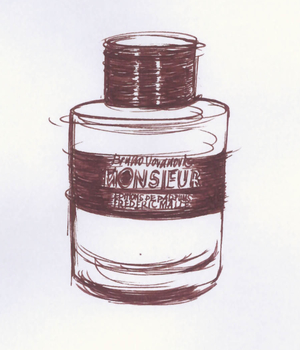 Monsieur. (aka Monsieur Dot) has divided opinion among my friends. Reactions have ranged from ‘cough mixture’ and ‘Vicks VapoRub’ to ‘virile’ and ‘chest wig’. Malle himself describes it as ‘super manly, very polished, though not affected’ and as having ‘a natural masculine elegance.’
Monsieur. (aka Monsieur Dot) has divided opinion among my friends. Reactions have ranged from ‘cough mixture’ and ‘Vicks VapoRub’ to ‘virile’ and ‘chest wig’. Malle himself describes it as ‘super manly, very polished, though not affected’ and as having ‘a natural masculine elegance.’
Created by the French perfumer Bruno Jovanovich, Monsieur. is a disco anthem to the 1970s playboy, all bay rum and alcohol with a whiff of cigarette smoke thrown in – think George Best meets Gianni Agnelli.
It’s based around patchouli, that all-too-popular scent of the time, but rather than the sweet, dope-addled patchouli of Camden Market hippy shops, this patchouli is raspy and slightly grubby round the edges, reminding us that it’s derived from an Indian roadside weed.
According to Malle, patchouli accounts for half of Jovanovich’s formula, but there’s also an odd mix of sweet and bitter ingredients, including mandarin orange and bay rum. The formula also includes synthetic amber and musk for longevity and plushness, with cedar, frankincense and vanilla adding extra smokiness and depth. ‘Bruno showed the appetite of a young perfumer,’ Malle says. ‘He wanted to work on a classic and to compare himself with the other star perfumers I’ve been working with. That being said, he proved that he is already super mature when it comes to finishing such a hard product to make.’
If you like old-fashioned masculine smells and rum then Monsieur Dot is probably for you; if not you might find its bitter patchouli a bit too punchy for your taste, though Malle is unrepentant. Asked whether he thinks that men are re-embracing a more traditional form of masculinity, he proffers a very Gallic reply. ‘We live in a kaleidoscope full of different characters – a sort of “à la carte” world. There must be traditional, no bullshit, traditional elegance out there.’
As for its intriguing name, Malle explains that his idea was for a perfume, in his words, ‘Designed for a real Monsieur with no extra thrills or necessary embellishment, hence the “.”’ I get his point.
Random recent round-up
15 July, 2014
Following on from my brief review of Francis Kurkdjian’s latest men’s fragrance, PLURIEL, here are three more recent releases that I’ve been given by generous perfume companies, but that don’t appeal enough to me to merit giving them a full review.
I’ll start with Cartier’s DECLARATION L’EAU. Like the original Déclaration, L’Eau comes in a thin, high-shouldered, easy-(if you’re me)-to-knock-over bottle, and has the same fiddly, easy-to-break spray-closure. It’s also almost impossible to get the bottle back inside the box, thanks to an awkward cardboard liner.
As for the fragrance itself, it’s pleasant enough, smelling fairly fresh and natural when you first spray it on, with lemon and slightly sweaty hint of cumin. It’s not something I’d rush out and buy when there are so many better perfumes to choose from, but at least it’s not objectionable, though the curry-sweat cumin smell doesn’t really appeal to me.
Hermès’ TERRE D’HERMES EAU TRES FRAICHE smells reassuringly expensive, as you’d hope from this brand, with a fresh mandarin eau-de-cologne start; interestingly a trace of spicy cumin comes out after a while, similar though not quite as insistent as the sweaty cumin smell in the Cartier Déclaration L’Eau. At least this is a perfume you actually want to try on your skin.
But what I really like is the classy clear-glass bottle, with its moulded-H base subtly tinted in Hermès orange. It’s an elegantly minimalist design with minimalist lettering, topped with a metal plate and a clever new cap that twists down to reveal the spray.
By way of contrast, Paul Smith’s EXTREME SPORT is horrible in every way. According to its website, ‘the top notes are full of energy and freshness from Florida oranges and a double shot of frosted spearmint. The floral heart of the fragrance combines the original geranium floral facet, with the freshness of lavender – and the unforgettable dry-down signature of incense is enriched with vibrant cedarwood’. That’s one way of describing it: to me it smells like toilet cleaner.
The mingy-looking bottle is no better. A blue-glass square with a cheap-feeling plastic cap, it’s adorned with a nasty out-of-focus transfer of a stop-watch on the back: so sporty. Even the name is naff: ‘Extreme’ and ‘Sport’ being surely two of the most overused words in mass-market men’s perfumery.
Admittedly it’s cheap as perfumes go (under £40 for 100ml), but I don’t think that’s any excuse. In fact all the Paul Smith perfumes are a bit of a puzzle to me: he’s universally admired as such a stylish, switched-on (and by all accounts personally charming) designer, but the perfume packaging has none of the style of the fashion brand, and I haven’t smelled a single perfume in what’s now quite a large range that I’ve liked.
Could the answer be that Paul Smith simply isn’t interested in perfume, or has no sense of smell? Of course I know that designers rarely have much to do with the scents sold under their name, but you’d think that someone as apparently exacting as Smith would make sure that the fragrances were more on brand than they are. For now it’s a perfume mystery.
Hermès
Eau de Mandarine Ambrée
1 June, 2014
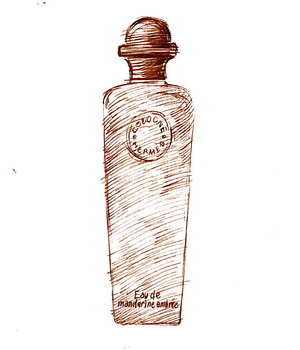 Now this is fun. Eau de Mandarine Ambrée isn’t perhaps the most sophisticated perfume in the world, but it’s a jolly, cheering little scent, that smells sweet and zesty and pretty much exactly like mandarin juice when you first spray it on. It was launched in 2013, at the same time as Eau de Narcisse Bleu, and brings the number of Hermès colognes up to five (the other three being Eau d’Orange Verte, Eau de Gentiane Blanche and Eau de Pamplemousse Rose).
Now this is fun. Eau de Mandarine Ambrée isn’t perhaps the most sophisticated perfume in the world, but it’s a jolly, cheering little scent, that smells sweet and zesty and pretty much exactly like mandarin juice when you first spray it on. It was launched in 2013, at the same time as Eau de Narcisse Bleu, and brings the number of Hermès colognes up to five (the other three being Eau d’Orange Verte, Eau de Gentiane Blanche and Eau de Pamplemousse Rose).
Like all the more recent Hermès perfumes it was created by Jean-Claude Ellena, whose celebrity status says much about how the industry has changed over the last decade or so – in the past no one would have known his name. His perfumes are nearly always interesting, if not always terrifically commercial, and Hermès seem to have given him licence (if you’ll forgive the pun) to follow his own nose and see where it takes him, especially with the colognes and it Hermessences range – see my review of Vétiver Tonka.
Ellena is very interested in food, and like quite a few of his perfumes, Eau de Mandarine Ambrée reminds me of cooking smells: nice cooking smells, that is. In this case it reminds me of the ugli-fruit marmalade that Roy made this year, which is very nice in its own way, but lacks the tartness of Seville-orange marmalade, and tastes a bit too sweet and jammy as a result.
Still, you could do far worse than start your day with Eau de Mandarine Ambrée. It’s light and refreshing and puts a smile on your face, yet it’s longer-lasting than most citrus-based colognes. This seems to be because Ellena has combined mandarin with a bit of passion-fruit extract and what’s known in the perfume trade as amber (thus Mandarine Ambrée).
‘Amber’ is one of those confusing terms that gives perfumery a bad name: it’s nothing to do with amber, the fossilised resin, or ambergris, the strange waxy lumps that whales occasionally cough up after swallowing too many cuttlefish (I kid you not), which develop a wonderful aroma only after bobbing around in the sea for a few years.
For perfumers, ‘amber’ refers to a careful blend of several ingredients, usually vanilla, benzoin and labdanum, which together give a sweet, slightly resinous and powdery smell. Ellena himself says that ‘I can think of no smell more joyful than mandarin, more mellow than amber,’ and I guess it’s the amber that helps Eau de Mandarine Ambrée last as long as it does.
Would I wear it a lot? Personally I prefer the sharper smells of colognes like Monsieur Balmain and Eau d’Orange Verte, but for anyone who likes something a bit sweeter and softer then Eau de Mandarine Ambrée would be a very happy choice.
Cartier
Must de Cartier
14 October, 2013
I love this perfume, though Cartier have foolishly discontinued it – not only because it’s such an alluringly unusual smell for a man, but also because both perfume and bottle have the feel of solid quality about them, which is more than can be said for a lot of big-brand fragrances.
Must de Cartier pour homme was created by perfumer Nathalie Feisthauer from Symrise, the German-based fragrance multinational, and launched in 2000, but it’s remained relatively little known despite its quality.
To me it has a soft, almost floral smell without being particularly feminine – slightly rose-like, perhaps, but in the delicate a-rose-is-not-a-rose manner of old-fashioned tea roses derived from the wild Rosa odorata. It’s gentle, too, warm without being heavy; in fact the lightness of its warmth is its Achilles heel, as the one thing it really lacks is much staying-power.
The word that crops up most often in reviews is ‘refined’, and I’ll happily second that. Like Chanel’s Pour Monsieur it’s not a statement perfume; that is, it’s not something to spray on if you want other people to notice it, at least consciously. But you’ll still smell mighty fine, even if only someone very close to you is likely to pick up on it.
Maybe it’s just my lack of olfactory sophistication, but Must de Cartier is one of those odd perfumes that – to me at least – smells unlike any of its actual ingredients, which include sandalwood, bergamot, mandarin, anise and tonka bean. That may, of course, be a testament to the skill with which Nathalie Feisthauer blended them together, though when I asked a friend to sniff it they instantly said ‘liquorice’, which I guess must be the anise.
Still, that leaves the question of what Must de Cartier does actually smell like, and I’m still puzzling over that. It has a certain warmth and sweetness, which presumably derives from the sandalwood and tonka bean, but my rose associations may – oddly – be an olfactory red herring, suggested by the Cartier deep-rose red of the chunky bottle top.
It’s a rare fragrance that can be unusual without being weird, elegant without being boring, and distinctive without being overpowering: if only it was still on the shelves.
Yves Saint Laurent
M7
12 July, 2012
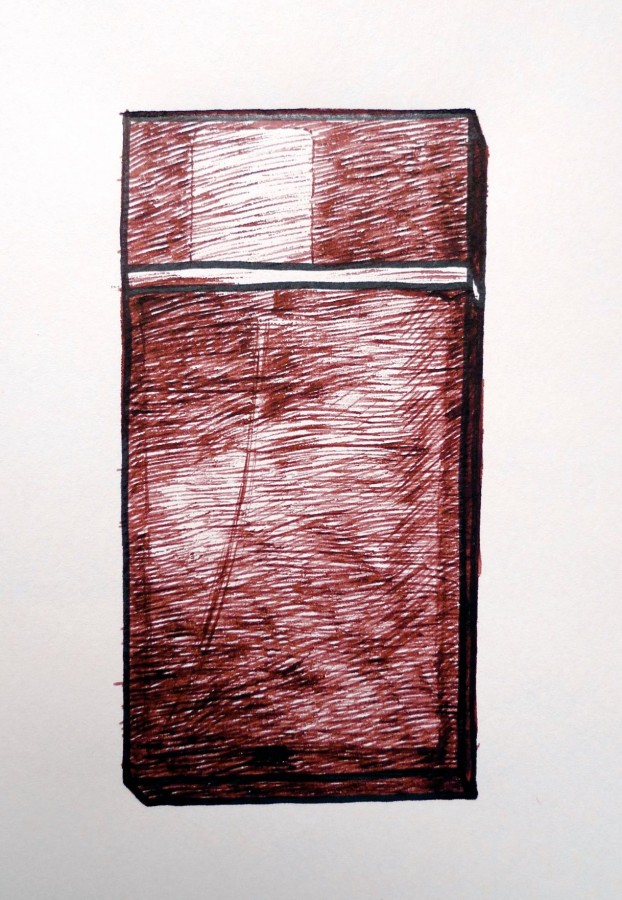 Tom Ford’s relatively short tenure at Yves Saint Laurent, from 2000 to 2004, won him both fans and detractors – among them YSL himself, who used to pen helpful letters criticising Ford’s latest shows. But it was Ford’s own considerable design talents and his genius for publicity dragged the declining fashion house back into the limelight, no more so than with the launch of M7 in 2002.
Tom Ford’s relatively short tenure at Yves Saint Laurent, from 2000 to 2004, won him both fans and detractors – among them YSL himself, who used to pen helpful letters criticising Ford’s latest shows. But it was Ford’s own considerable design talents and his genius for publicity dragged the declining fashion house back into the limelight, no more so than with the launch of M7 in 2002.
In a nod to Jeanloup Sieff’s legendary 1971 photograph of a naked Yves Saint Laurent that was used to promote the first YSL men’s fragrance, Ford launched M7 in 2002 with a full-frontal nude of martial-arts star Samuel de Cubber shot by Swedish photographer Sølve Sundsbø.
The all-too predictable storm of controversy may have long since been left behind, and sadly the perfume has since been reformulated and dumbed down, which is a real shame as it was originally an unusual and (to me at least) extremely appealing scent.
Tom Ford’s influence is most obviously apparent with the original bottle (pictured), which was a crisply designed rectangle of brown glass, the colour of medicine bottles. The brown perspex cap clipped on with a satisfying clunk, and the spray mechanism was set two-thirds along the top, giving it a cool asymmetric outline which has ‘designer’ written all over it. (Not literally – keep up!) It’s since been redesigned and the perfume reformulated, which is sadly typical of the industry.
What makes the perfume itself immediately striking is its odd yet somehow very successful combination of fruity sweetness with the almost catch-in-the-throat smell of woodsmoke, which gives it a masculine edge it would otherwise lack. Not very noticeable is an initial burst of citrus provided by bergamot and mandarin, though that probably adds something to that first impression of fruitiness.
What I hadn’t realised was that perfumers Alberto Morillas and Jacques Cavallier also added a touch of rosemary to the mix. It’s not something that jumps out at you, but smelling it again I twigged, for the first time, that rosemary’s herby smell has something a bit smoky about it too.
It’s a very clever way to emphasise this fragrance’s appealing smokiness, whose dryness is also underlined by a touch of that ultimate in male-perfume ingredients, the bitter earthy smell of vetiver. M7 lasts well too, and if some people find it either too fruity or slightly medicinal, then let them; I really don’t care.
